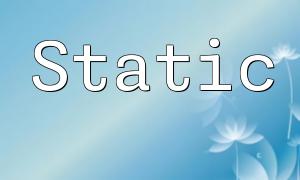PHP arrays are essential data structures for storing and organizing data. In PHP programming, creating and initializing arrays is a common operation. This article will guide you on how to create and initialize a PHP array, providing code examples to help you understand the process better.
In PHP, you can create an empty array using array() or []. Here are code examples of both methods:
// Using array() to create an empty array
$array1 = array();
// Using [] to create an empty array
$array2 = [];Besides creating an empty array, you can also create an array with default values using the array_fill() function. This will initialize each element with the same value. Below is an example:
// Create an array with 5 elements, each initialized to 0
$array = array_fill(0, 5, 0);
// Print the array
print_r($array);The output will be:
Array
(
[0] => 0
[1] => 0
[2] => 0
[3] => 0
[4] => 0
)If you already know the elements you want to store in the array, you can initialize the array directly. Below is an example using either array() or [] syntax:
// Initialize an array with multiple elements
$array = array('apple', 'banana', 'orange');
// Print the array
print_r($array);The output will be:
Array
(
[0] => apple
[1] => banana
[2] => orange
)Associative arrays use string keys to access values. You can create an associative array using array() or [], separating key-value pairs with the => symbol. Below is an example:
// Create an associative array
$array = array(
'name' => 'John Doe',
'age' => 30,
'email' => 'john@example.com'
);
// Print the array
print_r($array);The output will be:
Array
(
[name] => John Doe
[age] => 30
[email] => john@example.com
)In addition to initializing elements during array creation, you can also dynamically add elements to an existing array. You can do this using the array_push() function or directly through assignment. Here are two examples:
// Use array_push() to add elements
$array = array('apple', 'banana');
array_push($array, 'orange');
// Use assignment to add elements
$array[] = 'grape';
// Print the array
print_r($array);The output will be:
Array
(
[0] => apple
[1] => banana
[2] => orange
[3] => grape
)Creating and initializing arrays in PHP is one of the basic operations when writing programs. By using array() or [], you can easily create empty arrays, arrays with default values, arrays with predefined elements, and associative arrays. Additionally, you can dynamically add elements to an existing array using array_push() or direct assignment. We hope the code examples in this article will help you better understand how to work with PHP arrays.







